Related Research Articles

Squatting is the action of occupying an abandoned or unoccupied area of land or a building, usually residential, that the squatter does not own, rent or otherwise have lawful permission to use. The United Nations estimated in 2003 that there were one billion slum residents and squatters globally. Squatting occurs worldwide and tends to occur when people find empty buildings or land to occupy for housing. It has a long history, broken down by country below.
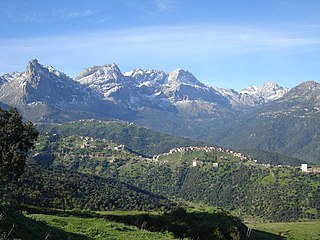
Kabylia or Kabylie is a mountainous coastal region in northern Algeria and the homeland of the Kabyle people. It is part of the Tell Atlas mountain range and is located at the edge of the Mediterranean Sea.

The Berber Spring was a period of political protest and civil activism in 1980, claiming recognition of the Berber identity and language in Algeria, with events mainly taking place in Kabylia and Algiers.

Tizi Ouzou or Thizi Wezzu is a city in north central Algeria, and capital of Tizi Ouzou Province and Tizi Ouzou District. It is among the largest cities in Algeria. It is the second most populous city in the Kabylia region after Béjaïa.

Azazga(عزازقة), is a town in the Tizi Ouzou Province in northern Algeria. It is the third largest Kabyle city, after Béjaïa and Tizi Ouzou. It is the district seat of the so-named Daïra. The population in 2008 was 34,683.
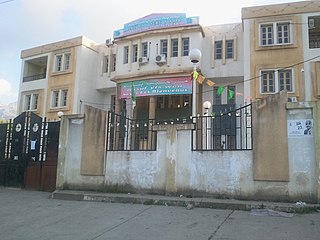
Tizi N'Tleta is a town and commune in Tizi Ouzou Province in Kabylie.
Many bombings were committed during the Algerian Civil War that began in 1991. The Salafist Group for Preaching and Combat (GSPC) claimed responsibility for many of them, while for others no group has claimed responsibility. These terrorist incidents generated a widespread sense of fear in Algeria. The number of bombings peaked in 2007, with a smaller peak in 2002, and they were particularly concentrated in the areas between Algiers and Tizi Ouzou, with very few occurring in the east or in the Sahara.

Squatting in Fiji is defined as being "a resident of a dwelling which is illegal according to planning by-laws regardless of whether the landowner has given consent". As of 2018, an estimated 20% of the total population was squatting, including people living on land owned by indigenous clans with informal permission. Most squatters are on the larger islands such as Vanua Levu and Viti Levu.

Squatting in Namibia is the occupation of unused land or derelict buildings without the permission of the owner. European settlers arrived in the nineteenth century and acquired land, leaving only 38 per cent of land in indigenous hands by 1902. This led to squatting and the Herero Wars, which ended with the Herero and Namaqua genocide. After Namibian independence in 1990, squatting increased as people migrated to the cities and land reform became a goal for those who had participated in the liberation struggle. By 2020, 401,748 people were living in 113 informal settlements across the country. Squatting continues to be regulated by the Squatters Proclamation of 1985; a challenge to this law was dismissed by the High Court in 2023.

Squatting in Ghana is the occupation of unused land or derelict buildings without the permission of the owner. Informal settlements are found in cities such as Kumasi and the capital Accra. Ashaiman, now a town of 100,000 people, was swelled by squatters. In central Accra, next to Agbogbloshie, the Old Fadama settlement houses an estimated 80,000 people and is subject to a controversial discussion about eviction. The residents have been supported by Amnesty International, the Centre on Housing Rights and Evictions and Shack Dwellers International.

Squatting in Guyana is the occupation of unused land or derelict buildings without the permission of the owner. Squatting has been used as a means to find housing by people displaced by conflict in the 1960s and by internal migrants from the 1980s onwards. In 2015, there were estimated to be over 100,000 squatters across the country. The government announced the National Squatter Regularisation Commission (NSRC) and the State Land Resettlement Commission in 2020, in the following year it allied with UN-Habitat to create the Guyana Strategy for Informal Settlements Upgrading and Prevention (GSISUP) which aims to regularize all informal settlements by 2030.

Squatting in Chile is the occupation of unused land or derelict buildings without the permission of the owner. From the 1960s onwards, informal settlements known as callampas were permitted although there were also evictions such as the massacre of Puerto Montt in 1969. In the 1970s, the government of Salvador Allende encouraged occupations, then following the coup d'état, the military junta repressed squatting. Callampas then became known as campamentos.

Squatting in Venezuela is the occupation of derelict buildings or unused land without the permission of the owner. Informal settlements, known first as "ranchos" and then "barrios", are common. In the capital Caracas notable squats have included the 23 de Enero housing estate, Centro Financiero Confinanzas and El Helicoide, a former shopping centre which is now a notorious prison.

Urban areas in the Philippines such as Metro Manila, Metro Cebu, and Metro Davao have large informal settlements. The Philippine Statistics Authority defines a squatter, or alternatively "informal dwellers", as "One who settles on the land of another without title or right or without the owner's consent whether in urban or rural areas". Squatting is criminalized by the Urban Development and Housing Act of 1992, also known as the Lina Law. There have been various attempts to regularize squatter settlements, such as the Zonal Improvement Program and the Community Mortgage Program. In 2018, the Philippine Statistics Authority estimated that out of the country's population of about 106 million, 4.5 million were homeless.

Squatting in Bangladesh occurs when squatters make informal settlements known as "bastees" on the periphery of cities such as Chittagong, Dhaka and Khulna. As of 2013, almost 35 per cent of Bangladesh's urban population lived in informal settlements.

Squatting in Angola occurs when displaced peoples occupy informal settlements in coastal cities such as the capital Luanda. The Government of Angola has been criticized by human rights groups for forcibly evicting squatters and not resettling them.
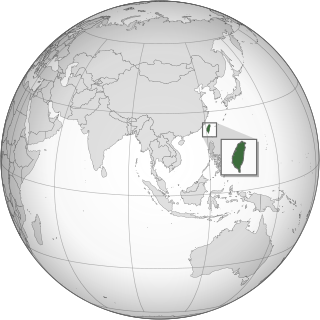
Squatting in Taiwan is the occupation of unused land or derelict buildings without the permission of the owner. Squatting was fuelled by migrants from China from the 1950s onwards and in addition cities such as the capital Taipei were swelled by internal migrants from the countryside. In order to create Daan Forest Park, 12,000 squatters were evicted. The informal settlement at Treasure Hill has been recognized as cultural heritage.
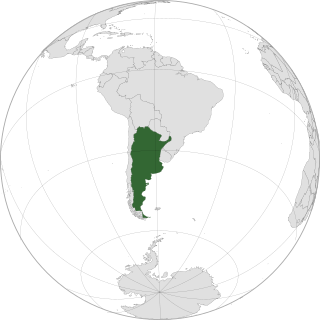
Squatting in Argentina is the occupation of derelict buildings or unused land without the permission of the owner. Shanty towns emerged on the periphery of Buenos Aires from the 1930s onwards and are known as villa miseria. After the 1998–2002 Argentine great depression, 311 worker cooperatives set up across the country as people squatted and re-opened businesses.

During the colonial occupation of Kenya, Black Africans working on farms owned by white settlers were called "squatters" by the British. As of 1945, there were over 200,000 such squatters in the Highlands and more than half were Kikuyu. The Mau Mau rebellion began amongst these squatters in the late 1940s and after independence in the early 1960s, peasants started squatting land in rural areas without the permission of the owner.
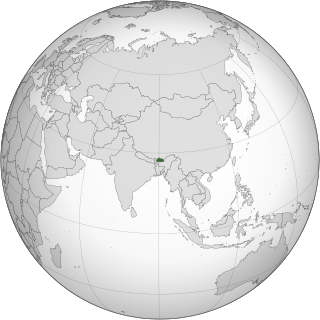
In 2001, about 10 per cent of the population of Bhutan's capital city Thimphu were living in squatted informal settlements; by 2019, the figure had dropped to 2 per cent since the squatters had been rehoused. There are also rudimentary settlements on the periphery of other cities such as Phuntsholing and Samdrup Jongkhar. The inhabitants work as manual labourers or in the informal economy.
References
- ↑ Bellal, Tahar (2009). "Housing supply in Algeria: Affordability matters rather than availability" (PDF). Theoretical and Empirical Researches in Urban Management. 3 (12): 109–110.
- ↑ Feichtinger, Moritz (January 2017). "'A Great Reformatory': Social Planning and Strategic Resettlement in Late Colonial Kenya and Algeria, 1952–63". Journal of Contemporary History. 52 (1): 45–72. doi:10.1177/0022009415616867. S2CID 159532876.
- ↑ "Algeria: 270 Squatter Families to Be Resettled in Tizi-Ouzou". NAU. 16 December 2011.
- ↑ Farrah, Raouf (2020). "Algeria's Migration Dilemma" (PDF). Global Initiative. p. 17. Retrieved 24 December 2021.